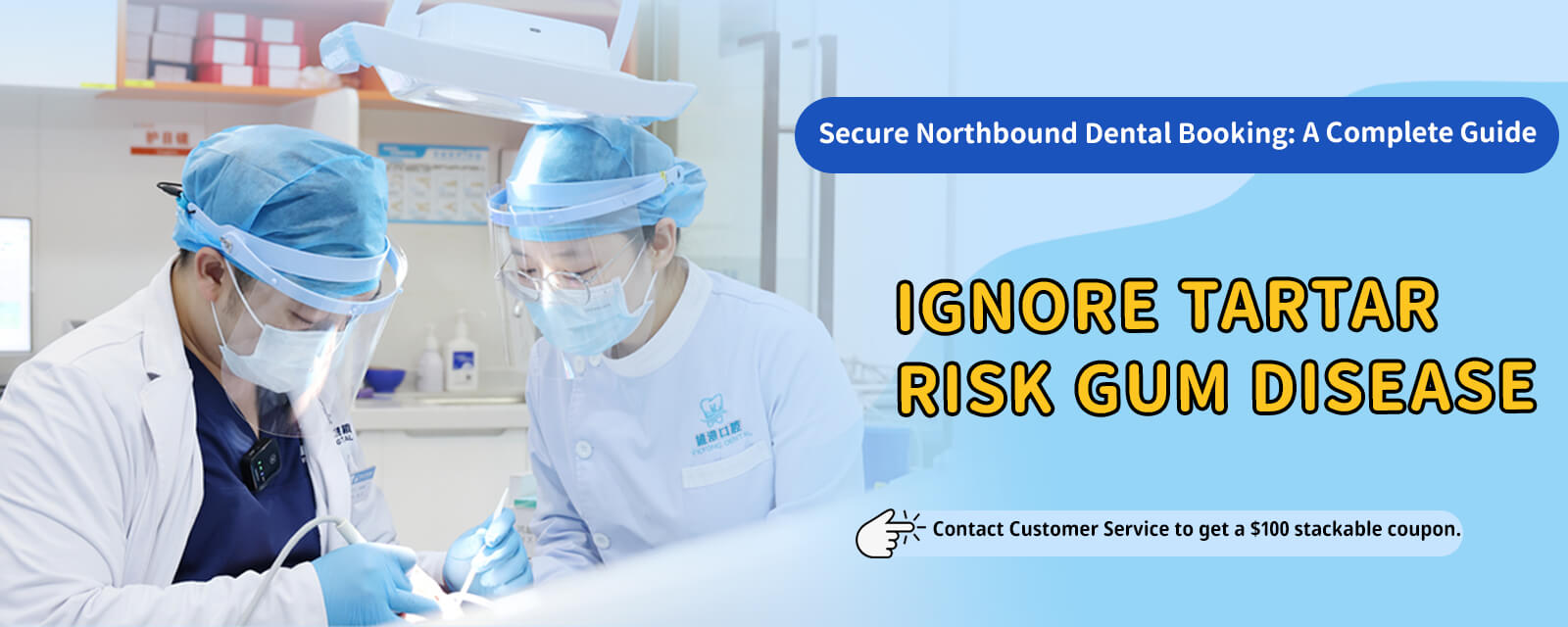Do I need a dental checkup before going to Mainland China for teeth cleaning
Do I need a dental checkup before going to Mainland China for teeth cleaning
Do you need a check-up before a dental cleaning in Mainland China?
More and more people travel to Mainland China for dental care, and teeth cleaning (scaling and polishing) is one of the most common services. But is it really something you can start the moment you sit down? In fact, having a basic oral examination before cleaning is important. It protects your safety and helps you get better results. Not everyone needs X-rays or an in‑depth workup, but a basic dental check-up really should come first.
Why get checked before scaling?
- Assess gum health: Bleeding during cleaning isn’t always because the hygienist was “too rough.” More often, your gums are already inflamed. A dentist can spot redness, swelling and bleeding points, and distinguish simple plaque/tartar buildup from signs of gum disease (gingivitis or periodontitis). If periodontal issues are present, you may need to move from a surface clean to deeper root planing to remove tartar under the gumline.
- Map where tartar is: Calculus doesn’t just sit on the tooth surface; it can accumulate below the gums. An exam helps identify where deposits are, so cleaning can proceed from shallow to deep, reducing discomfort and risk.
- Catch cavities and damaged work: Tiny caries or loosened old fillings won’t be fixed by cleaning. An exam identifies cracks, chipped edges, and leaky restoration margins so fragile areas aren’t overstressed during scaling.
- Review your medical history: If you have heart valve disease, take anticoagulants long term, have diabetes, are pregnant, or have other medical conditions, tell your dentist. The cleaning method may need adjustment and added precautions.
- Plan for sensitivity: If you’re sensitive to hot or cold, your dentist can use lower-power ultrasonic scaling, increase water flow, or treat in sections to make you more comfortable.
What does a basic pre-cleaning exam include?
- Visual exam and medical history: Check gum color, swelling, tooth mobility, and ask about recent pain, bleeding or bad breath.
- Periodontal measurements: Use a periodontal probe to measure pocket depths and assess the support from gums and jawbone.
- Oral hygiene assessment: Evaluate plaque levels and tartar buildup to set cleaning priorities.
- Dental X-rays (not always): If deep subgingival tartar, bone loss, or possible cavities between teeth are suspected, your dentist may suggest bitewing X-rays or periapical/full-mouth films. Not every cleaning requires X-rays; they’re used when clinically indicated.
- Oral mucosa screening: A quick look at the tongue, cheeks and floor of the mouth to check for ulcers or unusual growths, allowing early detection of problems.
How do approaches differ between Hong Kong and Mainland China?
Many Mainland clinics offer “package” cleanings. Some do a more basic check, while plenty of dental centers follow the same flow as Hong Kong—exam first, then cleaning. Wherever you go, you can ask to have a basic oral exam before scheduling the cleaning. When choosing a clinic, look for:
- Proper credentials and licensing
- Clear sterilization protocols
- One patient, one sterile instrument set
- Bagged, autoclaved handpieces and a clean operatory
- Feel free to ask: “Do you use an autoclave (steam sterilizer)?”
Communication matters. Always provide a

ccurate medical history and medication details to avoid errors.
When can you go straight to cleaning?
- You’ve been getting maintenance every six months, your gums are healthy, you brush and floss well, and you don’t have obvious bleeding, swelling, bad breath or wobbly teeth. In these cases, a basic check to confirm there’s no new issue is enough, and you can proceed with scaling and polishing.
When should you have a full exam first—and possibly delay cleaning?
- You haven’t seen a dentist for a long time; your gums bleed frequently; you notice bad breath, receding gums, teeth starting to feel loose, pain when biting, or nighttime gum swelling. These signs may indicate periodontitis or tooth decay. Get examined first, take X-rays if needed, build a treatment plan, then arrange the appropriate cleaning steps.
Common myths about teeth cleaning
- “Cleaning makes teeth loose.” Mostly a misunderstanding. When heavy tartar sticks to teeth and gums, it can make teeth feel “solid.” Removing calculus reveals the true condition; teeth already affected by gum disease may feel looser—this reflects the underlying problem, not damage caused by cleaning.
- “Cleaning scrapes off enamel.” Proper ultrasonic scaling vibrates away tartar and biofilm; it doesn’t grind healthy enamel. What truly harms teeth is long-term poor hygiene leading to acid erosion and cavities.
- “Bleeding during cleaning means the gums were injured.” In most cases, bleeding comes from pre-existing inflammation. After plaque and tartar are removed and you brush correctly, bleeding usually decreases within a few days.
Tips before going north for a dental cleaning
- Book ahead and ask whether a basic oral exam comes first and if you should bring previous X-rays.
- Bring your Hong Kong dental records or X-rays to give the dentist context.
- Disclose all medications and allergies, including for heart conditions, diabetes, anticoagulants, asthma and pregnancy.
- No need to fast, but avoid very spicy foods right before the appointment. If you’ve recently had a cold or sore throat, wait until you’re better.
- On the day, brush and floss so your mouth is clean and the bacterial load is lower.
How to care for your teeth after cleaning
You may have mild sensitivity for a day or two, or notice spaces between teeth feel “larger”—that’s the normal sensation after tartar is removed. Use a soft-bristle toothbrush and gentle toothpaste, and keep up daily flossing or interdental brushing. For the first 24 hours, avoid very spicy or hard foods and rinse gently with salt water. If your dentist recommends a follow-up, go—periodontal problems are usually treated in stages. It’s fine to see dentists in both Hong Kong and Mainland China, but keep clear records to support continuous care.
Summary
Going north for a dental cleaning can be convenient, but a basic oral exam beforehand is crucial. It helps distinguish routine maintenance from issues that need further treatment. Choose your clinic carefully, communicate clearly, and check sterilization standards and professional credentials to feel secure. The long-term key to healthy teeth is daily brushing plus flossing, combined with regular professional cleanings. Whether in Hong Kong or Mainland China, remember: a proper check-up leads to better results.




